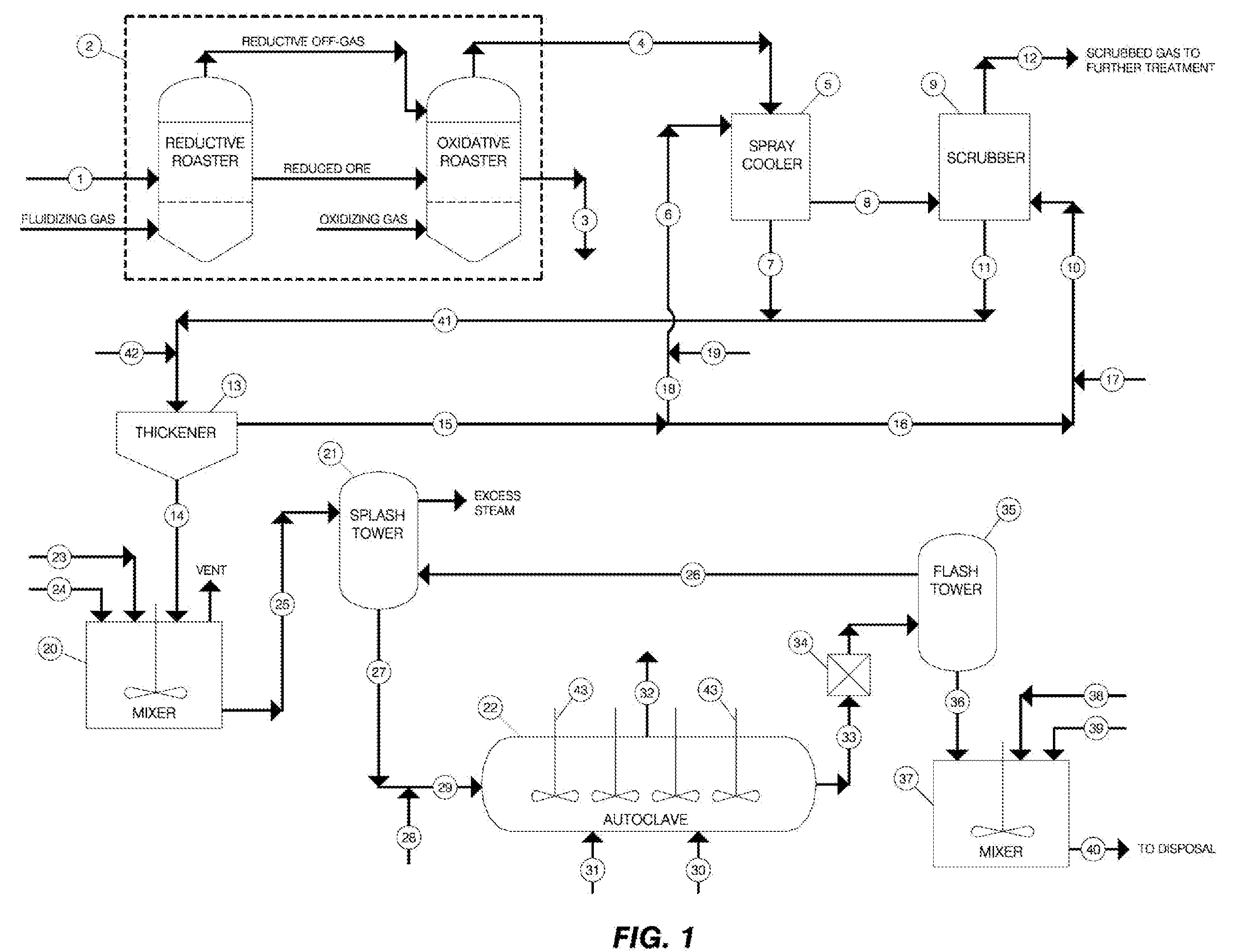Stabilization of Arsenic-Containing Wastes Generated During Treatment of Sulfide Ores
a technology of arsenic and sulfide ores, which is applied in the direction of arsenic compounds, inorganic chemistry, antimony compounds, etc., can solve the problems of high cost of the easy-to-handle and remove scorodite precipitates, and high cost of reagents needed for the conversion, so as to achieve the effect of effectively catalyzing the pressure oxidation of trivalent arsenic im
- Summary
- Abstract
- Description
- Claims
- Application Information
AI Technical Summary
Benefits of technology
Problems solved by technology
Method used
Image
Examples
Embodiment Construction
[0014]By way of an illustration, the method of the invention may be described with reference to the handling and treatment of arsenic-containing wastes such as those generated in a metallurgical process for recovering gold from gold-bearing sulfide ores by means of roasting. An example of one such process is depicted in schematic form in FIG. 1, where a gold-bearing arsenopyrite ore is shown undergoing reductive roasting in a roasting operation of the type that generates off-gases containing the arsenic impurities as well as other compounds. The basic unit operations of the processing of the off-gases and the handling and treatment of the generated arsenic-containing wastes using the method of the invention are also shown in FIG. 1.
[0015]Thus, referring to FIG. 1, ground gold-bearing arsenopyrite ore 1 is fed to roasting operations 2, where it is first roasted in the absence, or with substoichiometric amounts, of oxygen and then with greater than stoichiometric amounts of oxygen at ...
PUM
 Login to View More
Login to View More Abstract
Description
Claims
Application Information
 Login to View More
Login to View More - R&D
- Intellectual Property
- Life Sciences
- Materials
- Tech Scout
- Unparalleled Data Quality
- Higher Quality Content
- 60% Fewer Hallucinations
Browse by: Latest US Patents, China's latest patents, Technical Efficacy Thesaurus, Application Domain, Technology Topic, Popular Technical Reports.
© 2025 PatSnap. All rights reserved.Legal|Privacy policy|Modern Slavery Act Transparency Statement|Sitemap|About US| Contact US: help@patsnap.com



